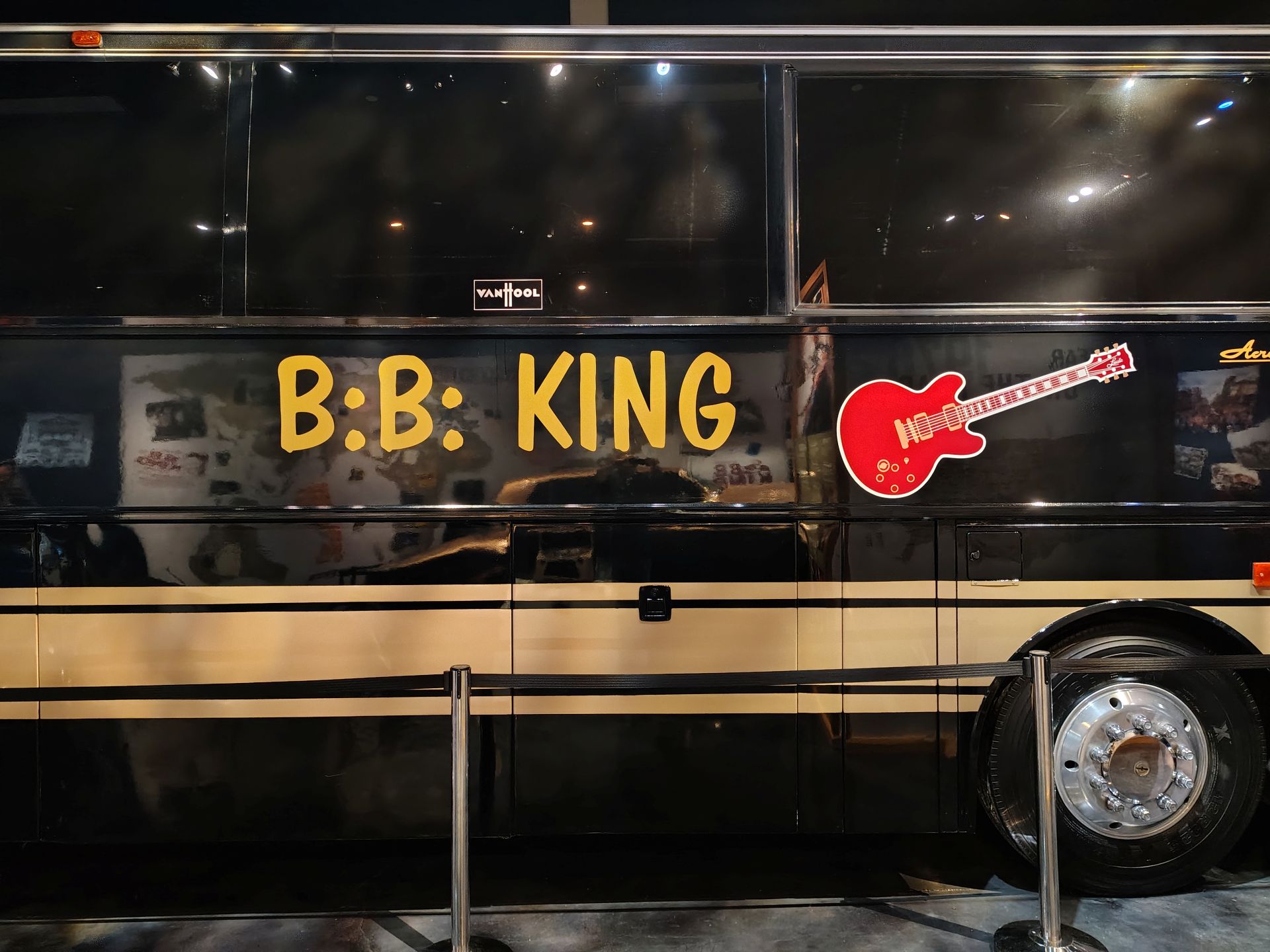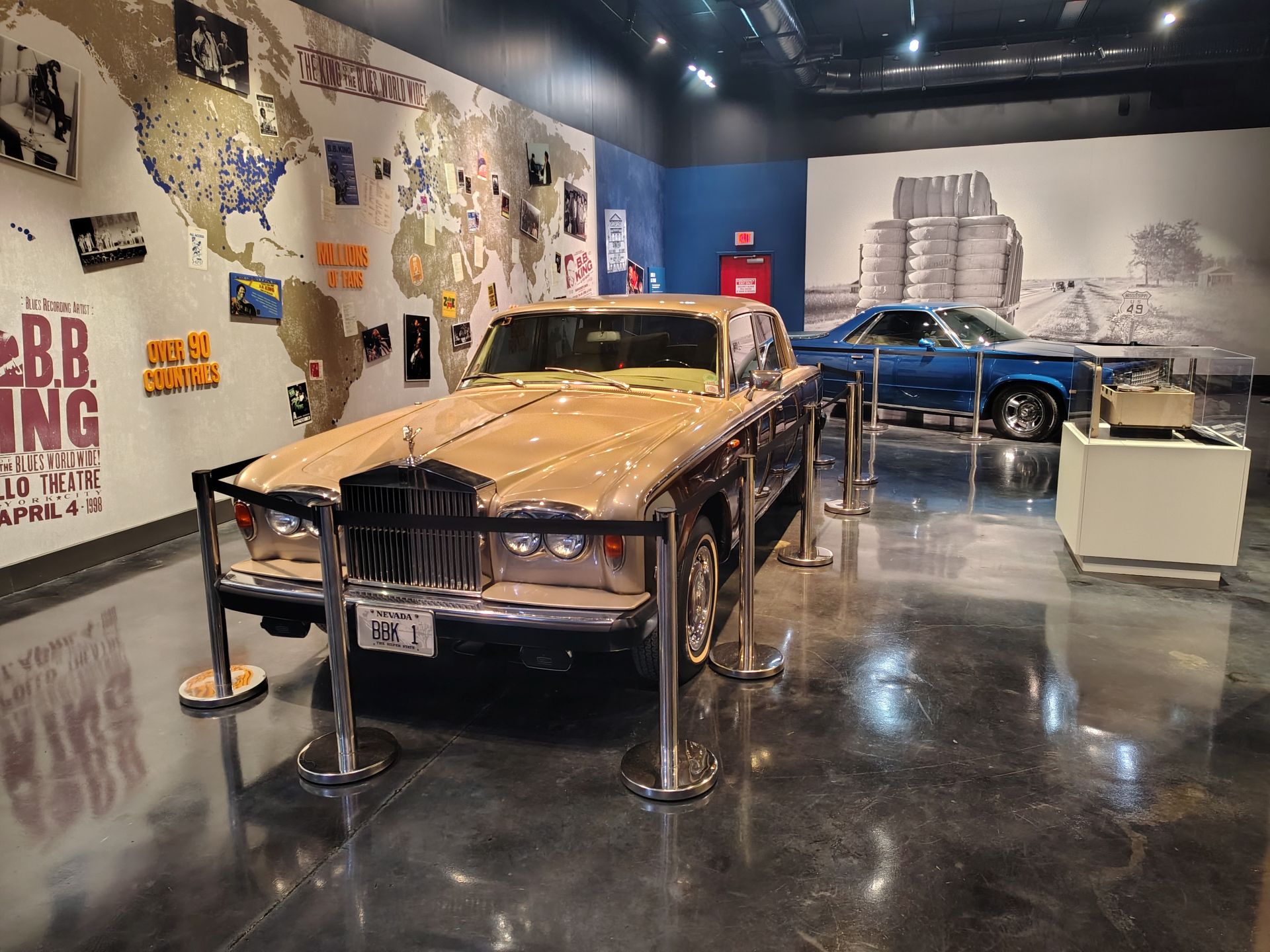
There weren't many vehicles in the parking lot on this weekday at the B.B. King Museum, but all of them had out-of-state license plates. Foreign accents from a few of the visitors reinforced the enormous reach of this Mississippi Delta native, who is perhaps the most famous blues musician of them all.
The great B.B. King would have turned 100 recently, had he been able to hang on for another decade. Instead, in May 2015, the world lost this incredibly talented musician who was also a kind and charismatic person. He's left us an incredible legacy, and much of it is on display at a top-notch museum in Indianola, Miss. It's the closest city to the rural farming area where King was born and raised, and worked the fields before finding his first big break in Memphis.

He certainly left his mark, to say the least. Surely, he's the first person that many people think of when they visualize electric blues. It's probably not even a stretch to say that most lead guitarists from the last few generations have borrowed from his distinctive and unique style, whether they realized it or not.
During my recent leisurely visit to the museum that honors him, it occurred to me that one of the big reasons King is so well remembered is that his music was so uplifting. Besides his stinging, trilling style of guitar playing that you couldn't ignore, he was a robust singer who could really deliver a song. And he always fronted a blasting, swinging powerhouse of a band that put out a huge sound on stage.
While blues is often tagged as sad, his music was joyous. Even when he moaned that nobody loved him but his mother, he brought laughter with the killer punchline of "and she could be jiving, too."
In reality, as I learned from one of the many eye-opening museum exhibits, his mother cared for him so deeply that she gave him the valuable early advice to show kindness and respect to everyone he met in life. This mannerly approach seems to have paid off handsomely, as he had not only had tremendous success worldwide but was universally known as a perfect gentleman in his one-on-one dealings with fans and admirers.

One of the many film clips playing on loops throughout the space offers a clue as to where the sense of joy in his music originated. Before he played the blues, and while he was still known by his given name of Riley King, he sang and played guitar for several years in the St. John's Gospel Quartet.
The museum tour starts in a small theater, where you can view a concise introductory film that traces his life from poverty to stardom and beyond. You'll learn that he became a trusted tractor operator until a farming mishap prompted him to grab his guitar and hitchhike north. Before long, he boldly landed a job as a disc jockey at WDIA, which gave him local acclaim and opened avenues for performing. This is when he promoted himself as the "Blues Boy," hence the B.B. nickname.
The film seems comprehensive, but the surrounding exhibits put King's life in music and outside of it in sharper focus. Overall, the impressive museum gives a much fuller picture of the man and his career than many other museums do. It's a friendly and pleasant environment where you can take your time poring over artifacts and absorbing the descriptions of various chapters of a truly extraordinary life. Looking back, this is someone who, in a fairly short span of time, transitioned from an impoverished farmworker to mainstream entertainment royalty performing for presidents and a pope.

In the final section of the museum, which is built to adjoin an old cotton gin, there are wheeled exhibits that effectively illustrate King's high level of success as well as his down-to-earth nature. Serving as a backdrop is the shiny black tour bus that purportedly reported 12 million miles as it carried King and his band to more than 300 shows a year in the late 1980s and early 90s.
The room's centerpiece is a luxurious two-tone Rolls-Royce Silver Shadow from 1978, but nearby is a captivating Chevy El Camino custom-painted in metallic blue. The exhibit's accompanying text reveals that this was King's favorite vehicle during his downtime. He apparently loved taking the low-profile El Camino for a spin in the hills near his home in Las Vegas, and would take his camera with him.
"This, to me, is Heaven," King is quoted as saying, "being out in nature taking pictures of the wildlife."
Outside the museum, you can pay your respects to the man in person. As well as being a living, loving tribute to him, the museum that bears his name is also his final resting place. At the Memorial Garden on the west side of the museum grounds, the blues great is entombed near a life-sized bronze statue and underneath a granite tablet engraved with his given name of Riley B. King.

Perhaps as thanks for the indelible music and inspiration, many blues-loving visitors have left guitar picks at the foot of this shrine.
The B.B. King Museum is located at 400 Second St. in Indianola, a short drive from U.S. 49 and just a couple of blocks from the heart of downtown. It is open Tuesday-Saturday from 10 a.m. to 5 p.m. Admission is $14 for adults 18 and over and $12 for seniors over 60; $10 for children ages 5-17, and free for those under 5.



























